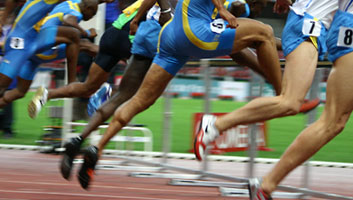
Article written by:
Stephanie Neal, Physiotherapist
The incidence of hamstring injuries has increased over the past seven AFL seasons.
They are the most common type of injury in the AFL and they cause the largest amount of lost playing time. The main risk factors for hamstring injury include;
- Increasing age
- Previous injury (ACL reconstruction, history of Osteitis Pubis)
- Ethnicity (increased risk if of a black ethnic origin, including Australian Aboriginal, African and Caribbean)
- Playing at a higher level
- Later stages of a football match/training
- Hamstring strength imbalance
- Previous hamstring injury within the past 12 months
Approximately 30% of hamstring strains in AFL are a recurrence of previous injury, with the highest risk of recurrence of injury within the first month of return to play. This risk for re-injury has been found to remain elevated for at least 12 months after injury.
This increased risk of injury after previous hamstring strain is thought to be secondary to a number of factors including;
-
- Scar tissue formation
- Reduced flexibility
- decreased eccentric strength (muscle strength produced as the muscle lengthens)
- Altered angle of peak torque
- Altered lower limb biomechanics
High rates of injury recurrence and increased risk of strain associated with previous hamstring injury highlights the importance of preventing hamstring injuries from occurring in the first place. Prevention of Hamstring injuries, however, is an area that requires ongoing research. This is evident given the high number of professional AFL players that continue to suffer from hamstring strains each year.
Prevention programs today should concentrate on addressing modifiable injury risk factors, including;
- Altered motor control (firing) patterns of hamstring and gluteals
- Altered biomechanics
- Increased neural tension
- Lumbar spine pathology
- Poor core/pelvic stability
- Decreased eccentric hamstring strength (decreased strength of hamstrings when in a lengthened position)
- Decreased flexibility of hip flexors and calf muscles
- Decreased hamstring flexibility
- Decreased quadriceps strength
Here at Corio Bay Sports Medicine we will be implementing specialised hamstring strengthening classes, the aim of which is to reduce hamstring injuries and discomfort and improve performance in individuals with a history of hamstring strain / pain. If you would like to register your interest for these classes, please ring the clinic on 5221 8822.
